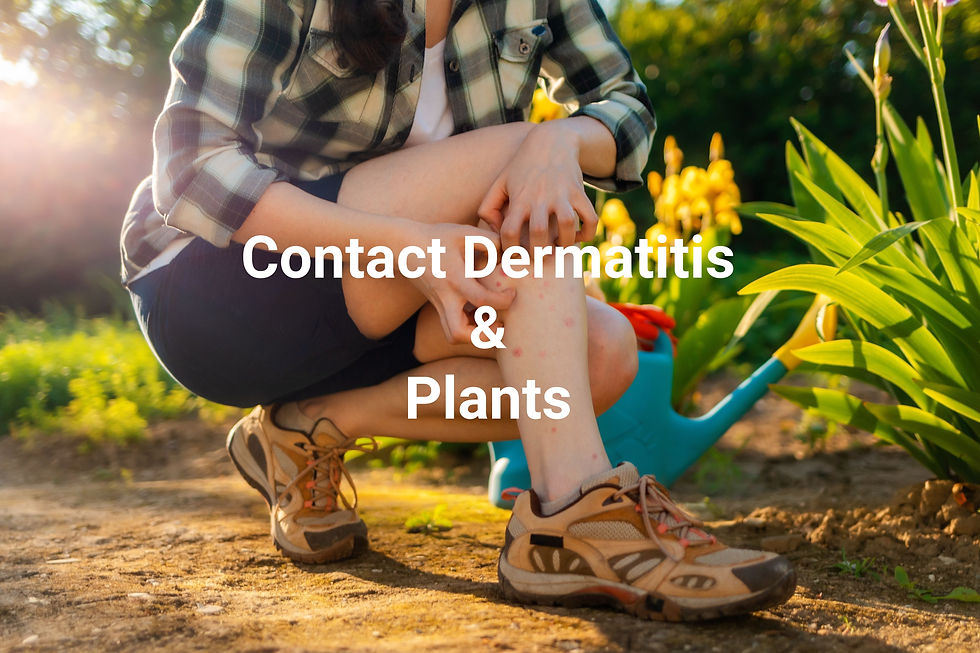The Itchy Toe & Athlete's Foot
- David Tollafield

- Mar 12
- 4 min read
Updated: Aug 15
That irritating little toe looks like Athlete’s foot, but it often isn’t. Treat yourself without fuss. Read more.
The irritating little toe will settle within a week of self-prescribed care if you attend to it. I have chosen this subject because the condition differs slightly from the usual fungal infection affecting the toe. Before panicking and thinking you are unclean, read this article. You do not need to be an athlete to suffer from this problem.

The Signs of an Athlete's Fungal Infection
Flaky skin – white and raw. It itches madly and has an odour, which, if touching the fingers, smells offensive. Feet are commonly attributed to this condition and are associated with a fungus rather than bacterial origin. Fungi are like dead material, i.e human tissue with no blood supply. There are several organisms responsible, including candidiasis.
While athlete’s foot (dermatomycosis) is associated with warm climates, it can affect us in winter and summer, all because we fail to dry in an area susceptible to the problem.
This annoying condition affects the small toe, or, to be more precise, the inside cleft of the fifth toe and sometimes the fourth toe.
Full-blown fungal infections can have a ring-like feature (ringworm) and affect skin across the foot and other parts of the body. Blisters emerge as small vesicles that predominate the sole and arch. Fungus can also affect nails but may take much longer to arrive, and treatment is often more prolonged.

When the white (macerated) skin is lifted, the new skin below becomes pink. However, the toe often splits (fissuring), adding to the discomfort.
The shape of the fifth toe
The little toe, or fifth toe, has a cup-shaped indent toward the base as it connects with the foot adjacent to the neighbouring fourth toe. The cup traps water if the area is not dried after showers or swimming. The skin becomes soggy (macerated – see picture) and sets up an irritation within a short period. If the skin surface (epidermis) sheds back or flakes, the lower layer is exposed and cannot combat fungus or bacteria if an opportunity arises. The change in odour is noticeable and confined to the scooped-out shape. Often, by the time the person notices the problem has hatched. A common occurrence is not just associated with showers but after a foot has been encased in a shoe for too long. Sweat does the work of a shower and leaves the toe moist even after shoe or boot removal.
What to do about skin damage?
Open the toes to locate the source of the irritation. This may affect one or both feet. Wash the foot and dry it vigorously with a small towel only used by yourself. The skin will flake away, leaving a moderate tender area, so you may not be able to be as vigorous as you might wish. Dry gently with a dryer set at a temperature that does not burn.
While an alcohol-based preparation in the form of surgical spirit was traditional and would help dry the toe, you can try an underarm antiperspirant. This way, you should know if you are sensitive, but the spray will act in the same way as the alcohol agent and have a pleasant odour. A slight discomfort is noted while the base skin is still raw or has a split. You can conveniently use this several times a day (2-3)
Light rather than a heavy dusting of talc
It is essential to use a talcum-type powder treated with an anti-fungal agent rather than ordinary cosmetic talc. This dries the base. I have used a picture above from a well-known company, but other preparations are available. My preference is to use a spray powder that has less clogging.

Don’t forget your footwear and socks.
Use socks or tights only if necessary for the first two days to allow better air
circulation. Clearly, in winter, this is impractical outside the house. Use footwear such as sandals and flip-flops to improve air to the feet. Clean the toe off at night and repeat in the morning. Don’t pile blankets on (winter) to superheat your feet. Each time you treat the skin, wash, dry and rub as vigorously as you can. Once the loose skin is removed by rubbing, the skin will heal and form a new layer. By the end of the first week (5 days), the toe should be more comfortable and start to resolve. Complete resolution may take 10 days. If there is any discharge, bathe the foot in saline and apply a suitable antiseptic.
The Cause of Athlete's foot
The shape of the toe at its base does not allow automatic drying. Bacteria frequently cause unpleasant smells by giving off chemicals that create an offensive odour.
The NHS link is useful and goes into other types of concerns.
If the condition does not settle and persists beyond 7 days without showing signs of improvement, then seek professional podiatric or medical help. Check the resource centres below.
CAUTION: Diabetics, those who cannot reach their feet, and people at risk from immunosuppressive treatment should seek advice earlier before self-treating this condition
Other resource centres
Note these links may change and remain outside our control.
You can now read Foot Health Myths Facts & Fables by David R. Tollafield, published at Amazon Books.
Thanks for reading ‘The Irritating Little Toe’ by David R. Tollafield





Comments